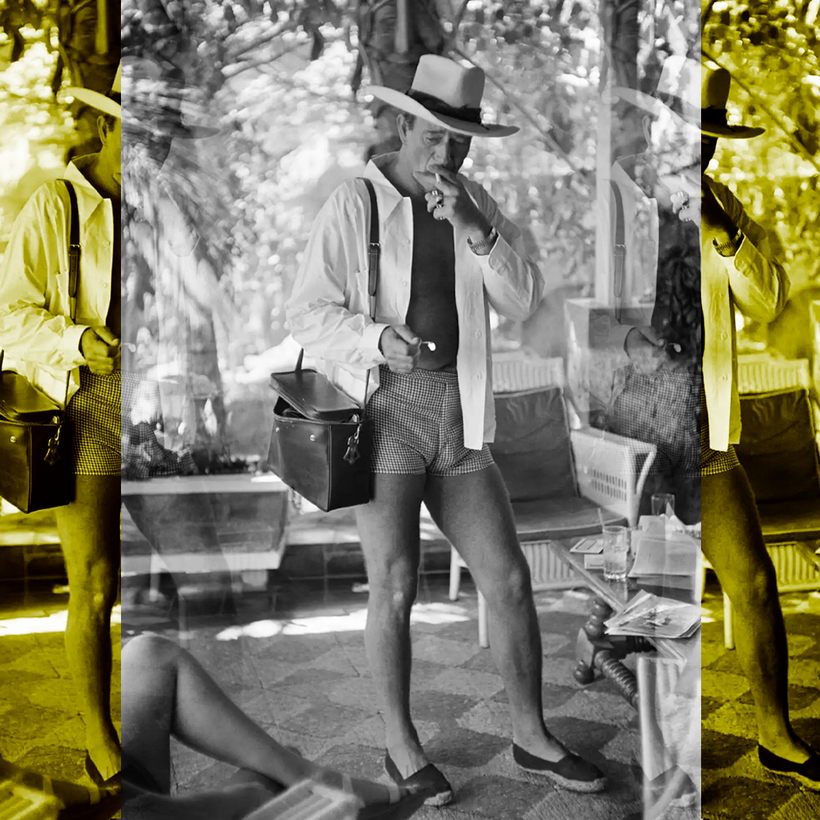VIVEnt LES ESPADRILLES!
Many years ago, when men’s style standards began to relax into a coma, someone gave men the unfortunate idea that people wanted to see their exposed feet and toes out in public. Since then, those of us who don’t have a foot fetish have had to endure the gag-inducing scourge that is sandals and flip-flops worn outside of a beach-resort milieu.
It’s safe to say that few people in polite modern society want to look at a man’s bare feet, unless he’s next to a pool or working at the sandal salon at Bergdorf Goodman in ancient Rome. But that doesn’t mean there’s not an easy, elegant, slip-on solution for the casual summer stroller. Look no further than a pair of espadrilles.
For those who don’t already know, espadrilles are flat shoes with a canvas or cotton upper and a sole fashioned from esparto rope (which is made using the tough, grass-like fiber). Originally designed as peasant shoes that in parts of France and Spain date back at least to the 14th century, they’re light, airy, and protect your foot, but also stylish, comfortable, and easy to wear. My favorites are made by Soludos and come in a variety of colors and patterns. I’m partial to the striped Original Dali.
There will be naysayers who dig in their bare, dirty, calloused heels and insist that espadrilles are, in their own way, unattractive. To these contrarians, I offer the indisputable fact that there’s no greater abomination than uncontained feet. That’s not an opinion. It’s science.
STAY IN A HOTEL TO THINK LIKE KONDO
On a recent trip to Los Angeles, I stayed at the Sunset Tower Hotel, the venerable jewel box sitting atop Sunset Boulevard in West Hollywood. I could go on about the understated glamour and sophistication of the place, which is my chosen West Coast HQ. But during this past visit, I had a revelation: in terms of effective and efficient living, everything I needed was right there in that suite.
I had a navy suit and three fresh shirts hanging in the closet, a pair of shined wingtips, jeans, a few T-shirts, a polo shirt, sneakers, a set of workout clothes, socks, underwear, and a pair of those espadrilles I was just telling you about. The bathroom was full of fresh towels, grooming products, and a hair dryer if I ever needed it. And I could comfortably host an intimate cocktail party in the living room/lounge area.
One morning, dressed in the hotel robe and enjoying fresh coffee and chocolate-chip cookies from room service, I sat at the desk with my laptop, my iPad, and my trusty USB microphone and recorded my weekly episode of Scott Galloway’s No Mercy/No Malice podcast. A poolside lunch meeting downstairs at the Terrace Bar followed, and that night I had a reservation for dinner with a friend at the Tower Bar.
With the exception of my dogs, who were enjoying too many treats with their wonderful sitter in my apartment in New York, everything I really needed was right there. I started to take a cursory inventory of all the things I’d collected to fill my home over the years, feeling like a human lint roller of stuff as I moved through life, asking myself, “What is all of this nonsense for?”
I’m not one to go full minimalist—I do enjoy a lot of my possessions, after all—but whose home scene couldn’t use a deeper edit? A rigorous reflection during a stay in a nice hotel, where I have essentially everything I could need, can be clarifying this way.
Then I return home and get rid of maybe 2 of the 10 things I promised I’d unload. Progress, not perfection.
AVOID TEDIOUS TEXTING
Of all the forms of modern communication, texting is the one I use the most and like the least. As if our spelling and grammar hadn’t been in steep enough decline, texting has taken what was left of our collective writing skills and set them on fire. And, quite frankly, I’m too damn old to keep up with the lazy alphabet soup of initialisms, acronyms, and apronyms, all of which are begging to be tossed into my YHGTBFKM (You Have Got To Be F**king Kidding Me) file.
Along with the mutilation of standards, texting has unleashed some tedious tendencies in the less restrained among us. One vexing phenomenon is the rapid-fire response, in which the recipient seems so “activated” by a text that they grind into their phone with a frenetic fervor, firing off such a rapid succession of replies you’d think they’re being paid for each tap of the Send button. And just when I think it’s over, another animated ellipsis appears, ready to unleash another avalanche of monosyllabic nonsense about their current moment. Meanwhile, I’m just sitting there thinking, “I merely asked what time you wanted to meet for dinner.”
Similar to the rapid-fire response is the blow-by-blow update series. Once upon a time, we used to plan to meet at seven p.m., then meet at or reasonably close to seven p.m. Now it’s:
“Leaving now.”
“In a cab.”
“Almost there.”
“Traffic!”
“Here.”
“Gonna sit at the bar.”
“Ordering a drink. See you when you get here.”
It’s now 6:52 p.m., and I’m down the block getting stressed about actually being a few minutes early.
Another exasperating phenomenon with texts is the essay, which is a text with someone who confused iMessage with e-mail. The point—and beauty, I thought—of texting was brevity, not to workshop a draft of your next Substack. Brevity isn’t just the soul of wit; it’s the key to texting without alienating, aggravating, or boring the recipient to death. Let’s avoid taking conversational hostages and keep things short and sweet.
Thx. Luv u.
George Hahn is a humorist, entertainer, and writer living in New York


